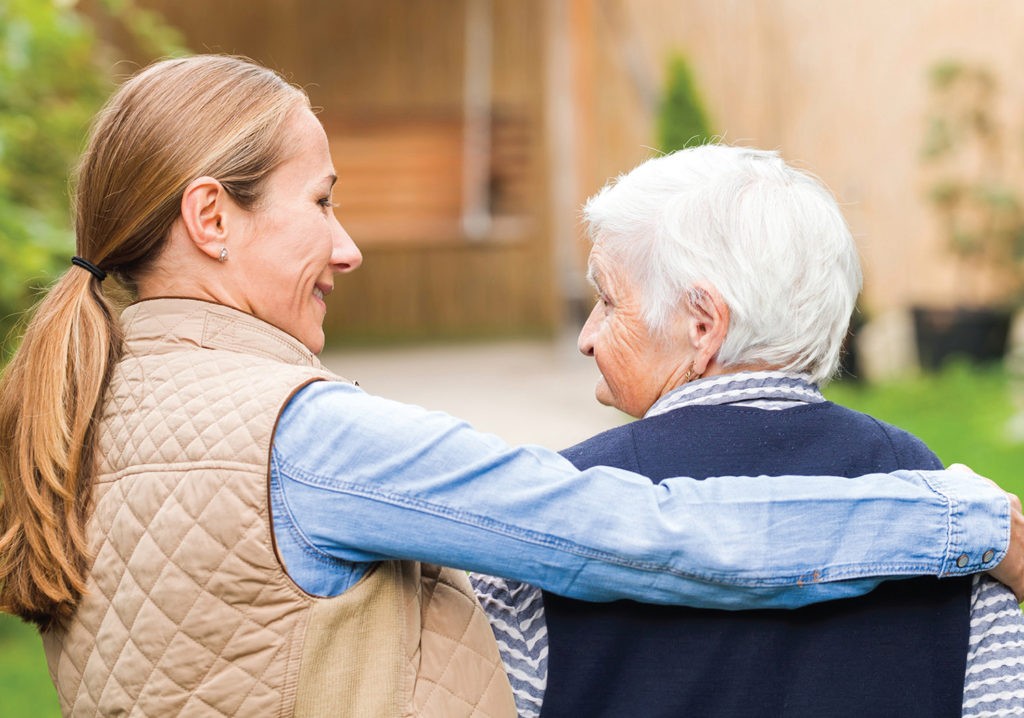November is National Caregiver Month

Nearly every month is dedicated to highlighting particular diseases and causes. These campaigns raise awareness and bring people together, acting as a reminder that there is never a need to battle alone.
Here at Healthy Kansas City magazine, we are proud to celebrate National Family Caregivers Month this November. The tradition began in 1994 as a week-long event begun by the National Family Caregiver Association and has now grown into an awareness month, due to former President Barack Obama’s proclamation in 2012.
“Across America, daughters and sons balance the work of caring for aging parents with the demands of their careers and raising their own children. Spouses and partners become caregivers to the ones they love even as they navigate their own health challenges… All of them give selflessly to bring comfort, social engagement, and stability to those they love. National Family Caregivers Month is a time to reflect on the compassion and dedication that family caregivers embody every day. As we offer our appreciation and admiration for their difficult work, let us also extend our own offers of support to them and their loved ones.”
A caregiver also called an informal caregiver, is defined as an unpaid individual involved in providing assistance with medical and daily living tasks for another individual, usually a family member. Typically caregivers are a spouse, partner, parent, or adult child and in many cases, take on the role while still providing for themselves or other family members. Caregivers, of course, support more than just aging parents. It also encompasses caring for other sick or disabled family members whose hard work has an immeasurable impact on the lives of their loved ones needing assistance.

Caregivers in the US
According to the National Alliance for Caregiving, More than 65 million people, 29% of the U.S. population, provide care for a chronically ill, disabled, or aged family member or friend during any given year and spend an average of 20 hours per week providing care for their loved one. Here are just a few statistics regarding these often unsung heroes.
Approximately 43.5 million caregivers have provided unpaid care to an adult or child in the last 12 months. [National Alliance for Caregiving and AARP. (2015). Caregiving in the U.S.]
About 34.2 million Americans have provided unpaid care to an adult age 50 or older in the last 12 months. [National Alliance for Caregiving and AARP. (2015). Caregiving in the U.S.]
The majority of caregivers (82%) care for one other adult, while 15% care for 2 adults, and 3% for 3 or more adults. [National Alliance for Caregiving and AARP. (2015). Caregiving in the U.S.]
Approximately 39.8 million caregivers provide care to adults (aged 18+) with a disability or illness or 16.6% of Americans. [Coughlin, J. (2010). Estimating the Impact of Caregiving and Employment on Well-Being: Outcomes & Insights in Health Management.]
About 15.7 million adult family caregivers care for someone who has Alzheimer’s disease or other dementia. [Alzheimer’s Association. (2015). 2015 Alzheimer’s Disease Facts and Figures.]
The value of services provided by informal caregivers has steadily increased over the last decade, with an estimated economic value of $470 billion in 2013, up from $450 billion in 2009 and $375 billion in 2007. [AARP Public Policy Institute. (2015). Valuing the Invaluable: 2015 Update.]
Filling a Vital Role in Healthcare
Caregivers are more than just a helper to their loved ones. They are also a vital asset in the delivery of healthcare.
More than 96% of caregivers assist in activities of daily living (ADLs) tasks such as personal hygiene, dressing, and undressing, getting in and out of bed, or instrumental activities of daily living (IADLs) setting appointments, dealing with insurance, and correctly dispensing medication. Caregivers also help ensure patients receive the correct treatments. Often, patients are not completely forthcoming with their physical or emotional needs and tend to discount or downplay their pain when speaking with doctors, if they mention their concerns at all. Caretakers play an important role in honest communication between doctors and patients by upholding patient preferences for treatment options when the patient cannot or will not speak for him or herself. Frequently, caregivers advocate for patients when they cannot advocate for themselves.

Nobody Knows Like the Caregiver
Facing a serious diagnosis is difficult for the patient and caregiver alike. Patients are commonly overwhelmed by the emotional turmoil of adjusting to things such as diminished capabilities, less freedom, and chronic pain. Perhaps one of the most important duties a caregiver is tasked with is providing emotional support and encouragement for the patients as they listen and care for their loved ones. Few know the challenges faced by those needing care or the emotional toll it takes more than the caregiver because they are there 24/7, in the trenches in a difficult but rewarding role.
Caring for Caregivers
In the U.S. about 85% of family caregivers do not receive any respite care. According to the National Alliance for Caregiving, nearly three quarters (72%) of family caregivers report not going to the doctor as often as they should and 55% say they skip doctor appointments for themselves. 63% of caregivers report having poor eating habits than non-caregivers and 58% indicate worse exercise habits than before caregiving responsibilities.
In honor of National Family Caregivers Month, we’d like to propose some ways you can help support the caregivers in your life.
Provide Respite
Take a few hours each week to provide some much needed time off to the primary caregiver. Even if you cannot provide the time yourself, consider paying for a weekly aid or time in an adult daycare.
Relieve Other Burdens
Where possible, relieve other burdens such as meal preparation, childcare, transportation, shopping, housekeeping, yard care, or similar jobs that of necessity get put on the back burner.
Gift Tools to Help
In caregiving, there are always tools that could make the job easier, but financial constraints keep them out of reach. Providing tools such as lifting devices, monitoring technologies, and home automation as a gift can help increase care while decreasing the demands.
Provide Self-Care Inspiration
In the process of caregiving, it is easy to neglect self-care. A great way to honor a caregiver is by giving them gifts that are about them. Consider gift certificates to a favorite restaurant or store, a book, or something you know they’ve wanted for a while.
Caregiving is one of the most difficult tasks anyone can undertake, yet one of the most rewarding. Nine in ten of individuals providing care said their lives were enriched in the process, yet many of these heroes experience loneliness and burnout. This National Caregiver Month, take some time to support a caregiver hero!






